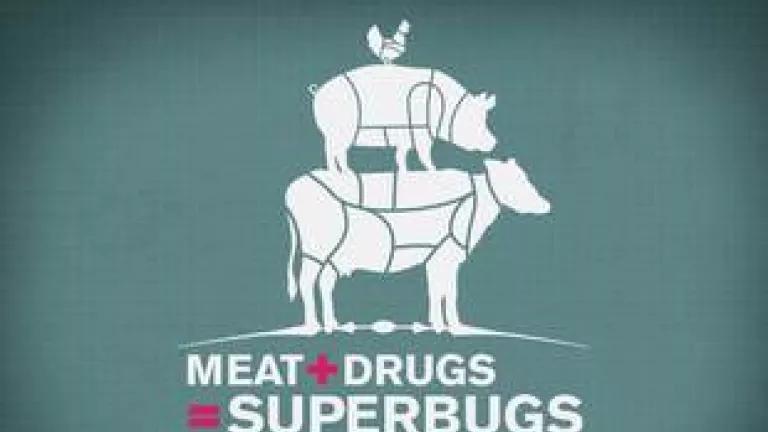
The recent headlines about hospitalizations of people around the country from drug-resistant salmonella linked to Foster Farms chicken is just the latest example of the dangers of growing antibiotic resistance. If we need any further warnings about the antibiotic-resistance crisis we face, we had some last week. Unfortunately, they are also reminders of how we are failing to put the brakes on even as we race towards a cliff.
Last week, PBS Frontline ran a sobering piece, describing the rise of resistant bacteria. On the program, Dr. Arjun Srinivasan, an associate director of the US Centers for Disease Control and Prevention (CDC), warned that we are shifting from a conversation about “’The end of antibiotics?’” to “’The end of antibiotics, period.’” He noted, “Antibiotics were one of [the most], if not the most, transformational discoveries in all of medicine. Infections are something that we struggled to treat for many, many years, for centuries before the advent of antibiotics, and infections were a major cause of death before the advent of antibiotics.” We are now placing the effectiveness of these “miracle drugs” (and therefore our own health) at greater and greater risk.
As Dr. Srinivasan cautions, “The more antibiotics we put into people, we put into the environment, we put into livestock, the more opportunities we create for these bacteria to become resistant.” The CDC released a report recently pointing out that every year, at least 2 million people in the U.S. acquire serious antibiotic resistant bacterial infections, and at least 23,000 people die of those infections, and many more die from conditions caused by complications from those infections. The report implicated both human and agricultural use of antibiotics in the rise of antibiotic-resistant infections.
Unfortunately, while we are making some progress on the human misuse of antibiotics, we are making virtually none on the misuse of antibiotics in livestock agriculture. Livestock use accounts for a gargantuan 80% of US antibiotic sales. And yet, FDA, the agency which regulates livestock antibiotics, has taken little meaningful action in the 35 years since it officially found that the use of antibiotics in the feed of animals fosters antibiotic resistance and poses a risk to human health.
On the same day that the Frontline program aired, an important follow up to a seminal 2008 report by the Pew Commission on Industrial Farm Animal Production underscored the lack of progress. The report from the Johns Hopkins Center for a Livable Future points out that “little progress” has been made to change patterns of antibiotic use in livestock, even with more evidence being added to the already strong body of science linking antibiotic use in livestock to risks to human health.
An October 27 editorial in USA Today is a condemnation of FDA’s ineffective response to the indiscriminate misuse of antibiotics in livestock. All the FDA has been willing to do has been to recommend that drug manufacturers and the meat industry voluntarily give up only some of the problematic uses. But why would those industries, which have so much to gain from the status quo, suddenly address this problem? As the editorial puts it:
Instead of mandating strict limits, the FDA has issued “guidance” calling on drug makers to stop selling certain antibiotics for unnecessary livestock use, and on farmers and ranchers to stop using the drugs for growth. Use for disease control [i.e. to prevent infections before they occur] is still permitted. Will drug makers and farmers really volunteer to give up tens of millions of dollars in profits without a government requirement?
It’s a case of putting the fox in charge of the henhouse (literally).
The other side’s response is to say that animals need antibiotics, just like kids do. Sure, when they are sick. But we don’t add antibiotics to children’s morning cereal day after day to prevent them from getting sick, and livestock operators shouldn’t be allowed to do that either. It’s an irresponsible use, and it is putting the health of all of us at risk.
We need better from those responsible for protecting our health—we need to put a stop to all uses of antibiotics on animals that are not sick and don’t need antibiotics. FDA’s job is to protect our food, our health, and our families. If FDA won’t act, Congress should be making them. It’s time for FDA to stop twiddling its thumbs in the fight against antibiotic resistance and start protecting our medicines and our health, instead of protecting corporate profits.

